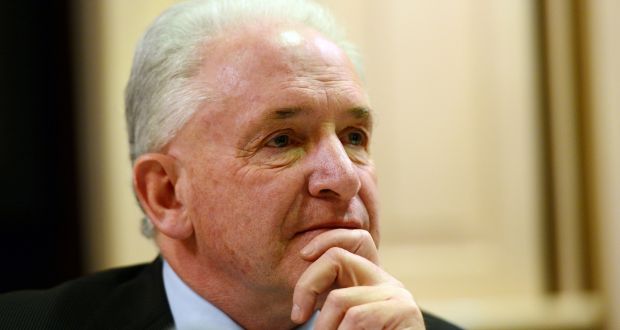‘Ireland’s Outcast’ was the headline on the front page of last week’s Catholic Herald, prominently and admirably flagged across social media ahead of publication as is usual. Below the headline was a picture of Ireland’s then outgoing papal nuncio, Archbishop Charles Brown, and the tagline: ‘The nation’s respected nuncio has been sent to Albania. Jon Anderson asks why.’
It was a cover that will have intrigued many of those who’d read this newspaper online, and will have left many wondering what to expect, given how recent pieces on the Herald website had cast the 6th-Century British saint Gildas as almost a kind of proto-Farage, or criticised Martin McGuinness for his failure to publicly repudiate the IRA’s actions, as though doing so wouldn’t ultimately have caused more bloodshed.
Fuss
In the end the story will have left many wondering what the fuss was about. ‘Why Ireland needs more Rome, not less’ on catholicherald.co.uk didn’t remotely touch on the question of why Dr Brown has been moved.
It said, rightly, that Dr Brown had been subject to hostile briefing from some quarters from the start, partly because of his perceived closeness to Pope Benedict XVI from his time working under him in the Congregation for the Doctrine of the Faith, and in particular because bishops appointed during his tenure had come from outside the dioceses where they would serve.
Beyond that, nothing, which seems especially odd given how Ireland is now without a nuncio less than 17 months until Dublin hosts the World Meeting of Families and when there has been just one bishop appointed in the last two years, with five dioceses currently headed by bishops past retirement age and a sixth run by a diocesan administrator.
It’s a strange piece overall, with some decent but commonplace points, some bizarre omissions, a number of open goals missed, and a range of other points at which informed readers will have raised quizzical eyebrows.
Liberal
Among its stranger parts is its characterisation of the Association of Catholic Priests as “a liberal lobby group with good media and political connections”, whose members are, if rather elderly, “probably no more so than the average for Irish priests”, and “very much a loyal opposition, which unites with the Irish hierarchy in rejecting too much interference from Rome in Ireland’s affairs”.
Leaving aside the unasked question of whether the leadership and more vocal members of the ACP are genuinely representative of those members who joined because they felt they’d need some sort of ‘trade union’ support if faced with unfair allegations or attacks, readers could do worse than to test this description by asking younger clerics in Ireland whether they’re ACP members, or by taking a trip over to associationofcatholicpriests.ie.
Prominent among the site’s recent posts is a posting from the blog of the supposedly ‘silenced’ priest Fr Tony Flannery, just weeks after the ACP site republished a post of his detailing an exchange he had with Dr Brown, accusing the then nuncio of misrepresenting him on RTÉ.
The recent post, from tonyflannery.com, is entitled ‘How much of Church doctrine do we really believe?’. It says some Church teachings are “no longer credible” before going on to misrepresent Church teaching, raising the question if Fr Flannery knows what he’s rejected.
Having read the piece several times, it’s hard not to wonder whether Fr Flannery is rejecting as “impossible” Church teaching on the Trinity, the Virgin Birth, and Immaculate Conception, or merely his own misunderstandings of these things.
Indeed, one might wonder whether the ACP, acting as a platform for him, does likewise, and also whether this is really the kind of stuff that a “loyal opposition” would push, even on a site viewed by just a few thousand visitors from Ireland each month.
In fairness to the ACP, it is – elsewhere – at least acknowledging some very serious problems in the Irish Church, though its proposed solutions invariably call to mind G.K. Chesterton’s observation that “The reformer is always right about what is wrong,” which continued, “he is generally wrong about what is right.”


 Greg Daly
Greg Daly Fr Flannery
Fr Flannery